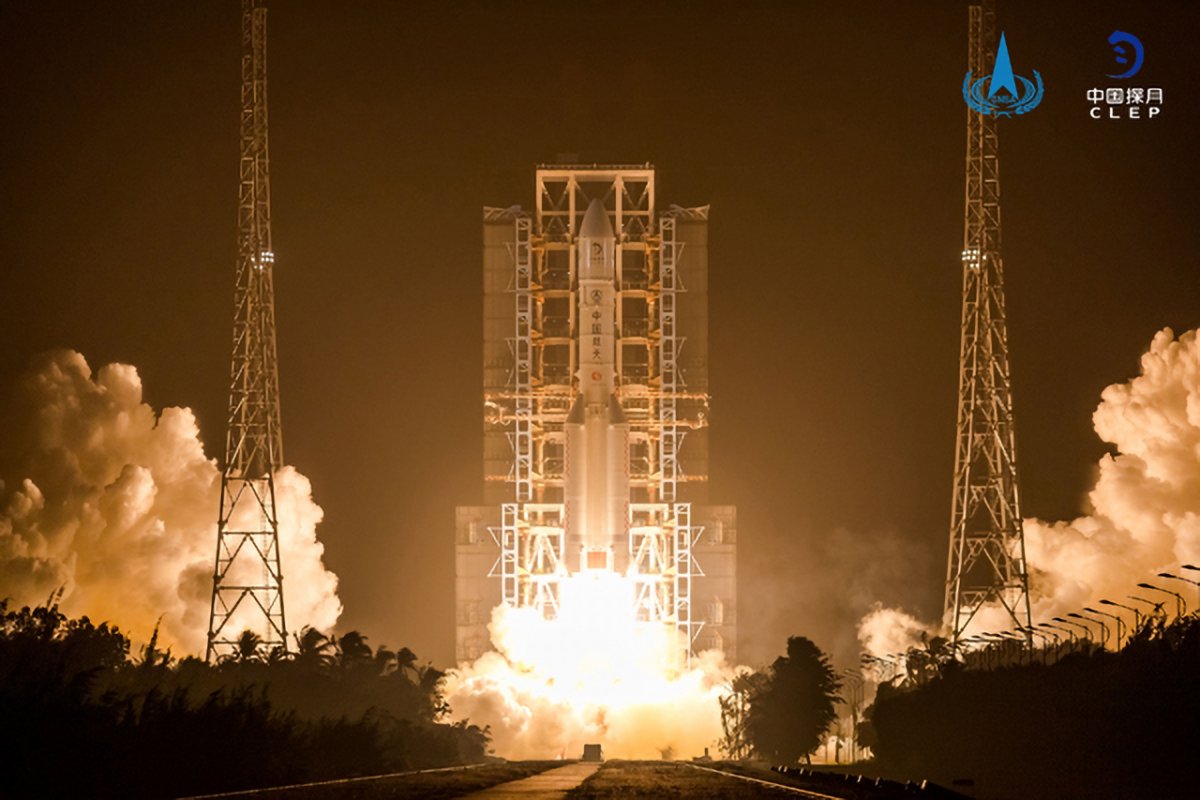China's flight to the moon: “A real dream destination” for geologists
Source: Heise.de added 28th Nov 2020China has already made many trips to the moon. Nevertheless, the Chang’e 5 launched this week is something very special. The space probe named after the Chinese moon goddess is not only supposed to drop a rover on the surface, as in previous missions, but also return to earth with rock samples.
Landing already at the weekend? The space agency of the People’s Republic has not yet announced an official date for the landing on the moon after the successful launch on Tuesday. However, US experts assume that the time will come this Sunday.
A greater challenge than landing a probe on the moon, as already happened, is the second for the Chinese researchers Part of the mission. If successful, it would be the first time in 35 years that rock samples have been returned to earth would be brought back. After the USA and the Soviet Union, China would be in the 60 he and 70 years only the third space nation to succeed in such a project.
“Landing on another celestial body is always complicated,” says Paolo Ferri, the former head of the mission operations of the European space agency ESA in the space control center in Darmstadt. The Chinese succeeded in landing a probe on the moon twice.
Repeat after 50 years ago The real sticking point, Ferri believes, is the return. The lander laden with stones is supposed to dock on the orbiter that is orbiting the moon: “The rendezvous in orbit will be a new challenge and when landing on earth the calculations have to be very precise.” The whole process is the same as the first manned space flight to the moon of Apollo 11 more than 50 years ago. However, the technology is much more advanced today.
Planetary geologists such as Ulrich Köhler from the German Aerospace Center (DLR) would also be happy about a successful mission. While the earth is extremely dynamic and changes both inside and on the surface, the much smaller moon, on which there is neither plate tectonics nor a disturbing atmosphere, has been barely active for about three billion years, Köhler explains a geological one Difference in the earth’s satellite.
The moon, explains Köhler, was created when our “proto-earth” collided with a Mars-sized body about 4.4 billion years ago. Rock samples from the moon are therefore like a “window into the early days of the solar system”.
There are still gaps in knowledge about the moon According to Köhler, thanks to the earlier missions of the Americans and Soviets, there are already around 382 kilograms of sample material from the moon in laboratories on earth, which would have made a “huge gain in knowledge” possible. Nevertheless, there are still gaps that could now be closed by the mission of the Chinese, who want to bring back about two kilograms of stones.
According to the US experts, the space probe will be one after the German on Sunday Astronomer Karl Rümker (1788 – 1862) called volcanic area, which is located in the “Ocean of Storms” – in the upper, left part of the earth-facing side of the moon. From a geological point of view, the landing site chosen by the Chinese is “a real dream destination,” says Koehler.
Chang’e 3 and Yutu on the moon ( 35 Photos) All of China’s pride
(Image: Chinese Academy of Sciences / China National Space Administration / The Science and Application Center for Moon and Deepspace Exploration) Space expert Ferri from ESA sees the start of the second Chinese lunar mission within two years not only as a geological mission , but an important technology test for manned flights to the earth’s satellite.
The Chinese would have chosen “a very complicated mission to bring samples from the moon to earth,” says Ferri: “It would have been much easier for them can do.” It is assumed that the entire technology is to be tested that will one day be necessary for a manned landing on the moon – and probably beyond.
The Chinese already have their first rover in the summer Started towards Mars. “Much of what you do on the moon can also be used on Mars,” says Ferri.
(mho)
brands: APOLLO media: Heise.de keywords: ESA
Related posts
Notice: Undefined variable: all_related in /var/www/vhosts/rondea.com/httpdocs/wp-content/themes/rondea-2-0/single-article.php on line 88
Notice: Undefined variable: all_related in /var/www/vhosts/rondea.com/httpdocs/wp-content/themes/rondea-2-0/single-article.php on line 88
Related Products
Notice: Undefined variable: all_related in /var/www/vhosts/rondea.com/httpdocs/wp-content/themes/rondea-2-0/single-article.php on line 91
Warning: Invalid argument supplied for foreach() in /var/www/vhosts/rondea.com/httpdocs/wp-content/themes/rondea-2-0/single-article.php on line 91
